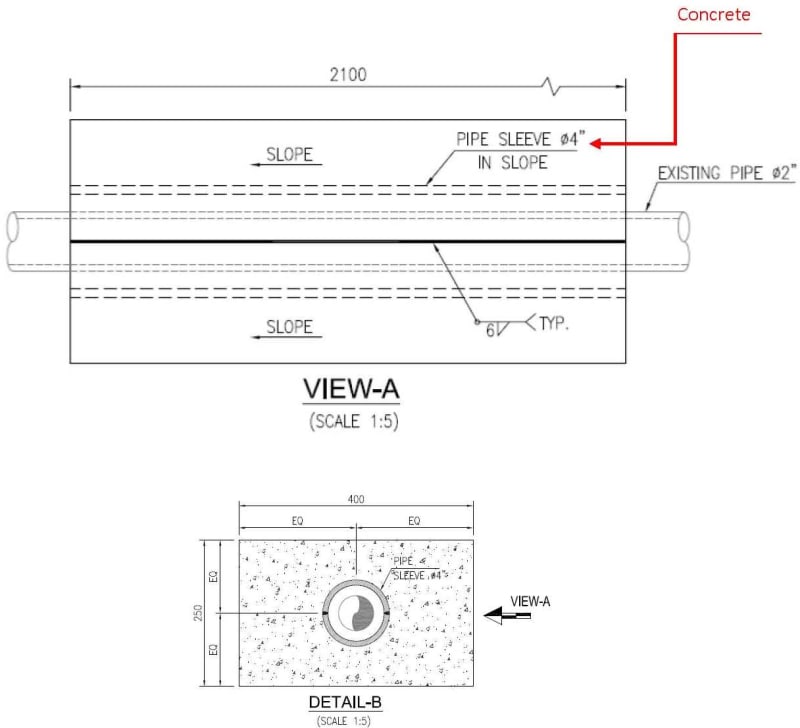AskTooMuch
Petroleum
- Jan 26, 2019
- 268
I have an existing horizontal pipe that will run thru a new concrete pedestal.
Pedestals is 2'x2'x 4'. Horizontal pipe is 4" dia and is located just a few inches above footing and about 3" from edge of pedestal.
I can make the pedestal bigger like 3'x'3' and add additional rebars.
But I want to make sure the pvc pipe can take the stress, what is the best way to detail this to limit the stress on the pipe.
Pedestals is 2'x2'x 4'. Horizontal pipe is 4" dia and is located just a few inches above footing and about 3" from edge of pedestal.
I can make the pedestal bigger like 3'x'3' and add additional rebars.
But I want to make sure the pvc pipe can take the stress, what is the best way to detail this to limit the stress on the pipe.

